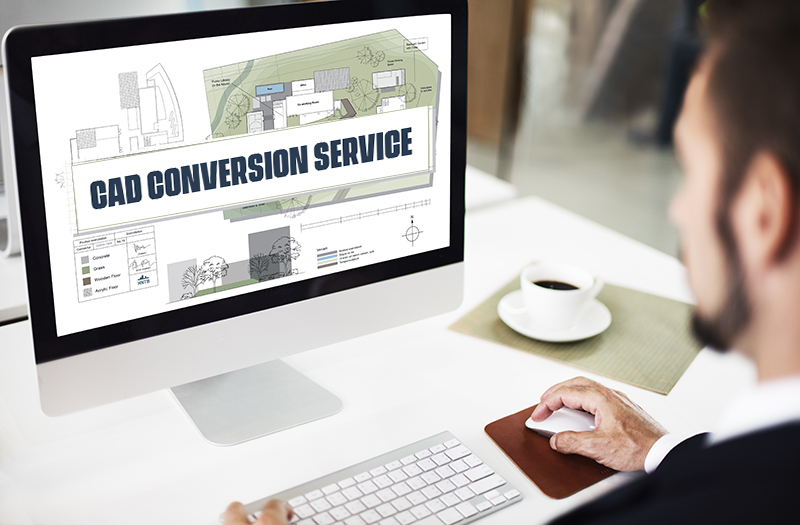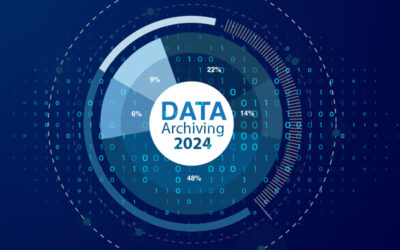CAD conversion holds significant importance in today’s digital landscape and is a vital process for many industries, including manufacturing, engineering, and architecture. It provides access to updated software capabilities, integrates with advanced technologies, facilitates design standardization and automation, enables the utilization of legacy data, enhances interoperability and collaboration, and supports archiving and documentation needs. By leveraging CAD conversion services, organizations can unlock the full potential of their CAD data, optimize their design processes, and increase productivity. Successful conversion depends on choosing the right service provider.
CAD Conversion: Complexities Involved
CAD conversion involves converting 2D or 3D designs into digital formats that can be used for various purposes, such as 3D printing, CNC machining, or simulation. It generally involves complex processes and requires specialized knowledge. Here are some factors that can make CAD conversion a complex process:
- Design complexity: Projects involving complex designs intricate geometries, 3D models, assemblies, or large-scale drawings may require additional effort and attention to maintain accuracy and precision.
- Data loss or corruption: Converting files from one format to another or during format upgrades can result in missing or distorted design elements, dimensions, or annotations if not handled properly.
- Software compatibility: Converting CAD files between different software platforms can be challenging as different software applications have their own unique features, functionalities, and file formats.
- Accuracy in scaling and dimensioning: Maintaining accurate scaling and dimensional precision during CAD conversion is critical but challenging. Even a minor error can affect the overall design integrity.
- Adherence to standards and customization requirements: CAD conversions often require adherence to specific industry standards, customization requirements, or company-specific templates. Accommodating these unique elements to ensure consistency and compliance may involve custom programming, template creation, or data mapping. This can make the conversion process quite complex.
Even a minor error in the document conversion process can lead to significant discrepancies and affect the overall design integrity. The good news is that while CAD conversion is challenging, there are professional outsourcing companies that specialize in this area. Choosing the right data conversion company can ensure the integrity of the original design, compatibility with various file formats, data security, timely delivery, and cost-effectiveness. On the other hand, the wrong choice can lead to delays, errors, and additional costs, which can affect the quality and success of your project. Let’s take a look at the factors to consider when choosing a CAD conversion service.
Selecting a CAD Conversion Service – Key Factors to Consider
To get the best results, there are several factors to consider when selecting an outsourcing partner for your CAD conversion project:
- Expertise and experience: The first factor to consider when choosing an outsourcing partner is their expertise and experience in the relevant area. Partner with a company that has a proven track record in providing CAD drafting services for a wide range of industries. For example, consider a manufacturing company needs to convert their 2D drawings into 3D CAD models for a new product line. A CAD service provider without the necessary expertise may not fully understand the intricacies of the manufacturing process and design intent. This may lead to neglect of critical details, such as tolerances, material specifications, and assembly constraints, resulting in inaccurate 3D models that do not align with the original design intent.
To choose the right CAD conversion outsourcing partner, evaluate their technical skills, software proficiency, and knowledge of relevant industry standards. Assess their portfolio, client references, and certifications as well as their online reviews and ratings. An expert will have no difficulty understanding your project requirements and can provide accurate, timely and customized solutions to meet your specific needs.
- Quality Assurance processes: Quality is paramount when it comes to CAD drafting and design. It is vital to evaluate the quality assurance processes employed by the outsourcing partner. Implementing quality assurance is essential for accurate and reliable results. For example, when a construction company hires a CAD conversion service provider for their architectural drawings, the provider follows a rigorous QA process. This involves thorough checks at multiple stages, software tools for accuracy verification, error correction, and ensuring compliance with industry standards. The final review ensures the integrity of the converted files, guaranteeing accurate and reliable CAD files for the company’s BIM project.
So, make sure the company you choose has robust quality control QA measures in place, such as multiple review stages, adherence to international drafting standards, and rigorous error-checking procedures. You can request samples or past project references to assess their quality standards and ensure that their deliverables can meet your expectations.
- Turnaround time: Turnaround time is another critical factor to consider when selecting a CAD conversion provider. Make sure the provider can deliver the converted designs within the required timeframe without compromising quality. Discuss the turnaround time with the provider and clarify any doubts or concerns before signing the contract with them.
- Scalability and flexibility: To meet the dynamic nature of business needs, it is crucial to select a reliable outsourcing company that possesses scalability and flexibility. Various factors, including technological advancements, industry standards, project scope, client preferences, and internal process improvements, can lead to changes in CAD drafting requirements. That’s why it’s essential to choose an outsourcing partner capable of adjusting their services to match your evolving needs.
Your CAD conversion partner should have the necessary infrastructure and resources to efficiently handle your workload, whether it involves a single CAD draft or a large volume of drawings. Scalability ensures that the outsourcing company can accommodate your increasing demands without compromising on quality or timelines. Additionally, they should be able to accommodate your urgent requests or project modifications, while maintaining the required level of service quality. An expert can ensure your CAD drafting requirements are effectively met, regardless of fluctuations in volume, complexity, or specific project needs.
- Data security and confidentiality: When outsourcing CAD drafting services, you will be sharing sensitive design information and intellectual property. By prioritizing data security when choosing your CAD conversion service can safeguard your intellectual property, maintain client confidentiality, comply with regulations, prevent data loss or corruption, and enable secure collaboration. Evaluate the outsourcing partner’s data protection protocols, including secure file transfer methods, encryption measures, and access control mechanisms. You can ask for references or certifications that validate their commitment to safeguarding client information.
CAD conversion is a critical process that can affect the quality and success of your project. Therefore, it’s crucial to select the right data conversion company based on experience, expertise, quality control measures, turnaround time, and security. Pricing is also important, though it should not be a primary factor when choosing CAD conversion services. A reliable company will assign a dedicated project manager to facilitate effective and seamless communication, which is crucial to achieve better project outcomes. By considering the above-listed factors and following a systematic approach, you can ensure that you get the best results and return for investment on your CAD conversion project.
Experience the benefits of our top-notch CAD conversion services!




